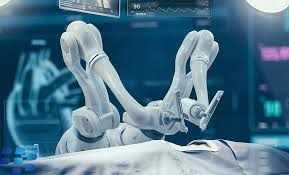The portrayal of robots in science fiction has often painted them as menacing machines, evoking fear and skepticism among the public. However, in the realm of healthcare, these very machines are now offering a transformative “healing touch,” particularly in the field of orthopaedics. As robotic technology advances, it is revolutionizing joint replacement surgery by providing unprecedented precision, thereby improving patient outcomes.
The Role of Robotics in Orthopaedic Surgery
In robotic-assisted joint replacement, the robot takes over two of the most crucial steps of the procedure: the precise cutting of the bone and the sizing and positioning of the implant. These stages are critical in determining the longevity of the joint replacement. While skilled surgeons can perform these steps with high accuracy, the potential for human error exists, which can affect the overall success of the surgery.
Robots, on the other hand, eliminate this margin of error. “To date, so far, all research on robotically assisted operations has demonstrated improved implant alignment and placement outcomes. It remains to be seen if this translates into improved clinical results and longevity. Studies that span one to three years have produced positive findings,” says Dr. Anant Kumar Tiwari, Professor and Head of the Joint Replacement Centre at Sir Ganga Ram Hospital, New Delhi.
Precision and Customization Through Advanced Technology
Robotic systems in orthopaedics are not just about precision; they also bring a level of customization previously unattainable. Using sophisticated imaging techniques and computer algorithms, a 3D model of the patient’s joint is created, allowing surgeons to plan the surgery down to the minutest detail. This personalized approach ensures that the surgery is tailored to the specific anatomical needs of each patient.
“Robotic technology has revolutionized joint replacement surgery by providing precision and improved outcomes. Advanced imaging and computer algorithms create a 3D model of the patient’s joint, allowing personalized surgical planning. This precision reduces human error, improves joint function, and reduces post-operative pain,” explains Dr. Atul Mishra, Senior Director of Orthopaedics at Fortis Hospital, Noida.
The Future of Robotic-Assisted Surgery
The ability of robotic systems to make real-time adjustments during surgery is another game-changer. This capability ensures that each procedure can be fine-tuned to achieve the best possible outcome, further reducing the risk of complications and enhancing recovery times.
As technology continues to advance, the role of robots in joint replacement surgery is expected to grow even more prominent. While current studies have shown promising results, particularly in terms of implant alignment and placement, long-term studies are needed to confirm whether these improvements translate into better clinical outcomes and increased longevity of the implants.
In a world where technology is rapidly evolving, the integration of robotics into healthcare, especially in orthopaedics, exemplifies how innovation can be harnessed to improve patient care. As robots continue to refine the precision and effectiveness of surgical procedures, they are likely to become indispensable tools in the operating room, bringing the future of healthcare into the present.











